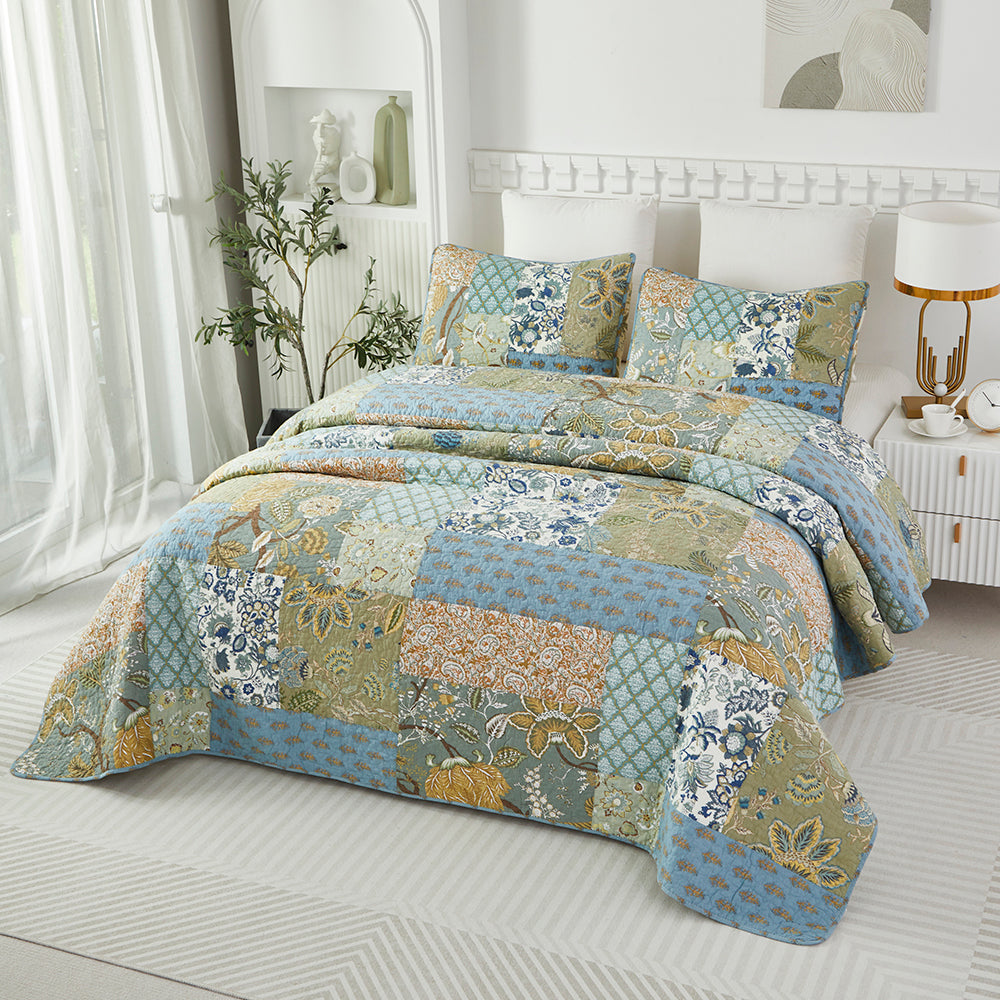About Quilt Sets in the United States

The history of quilt sets in the United States is deeply intertwined with cultural traditions, resourcefulness, and artistic expression. Quilts—layered textiles consisting of a decorative top, insulating batting, and a backing, stitched together—have evolved from practical necessities to cherished heirlooms and symbols of American heritage.
Colonial Beginnings (17th–18th Centuries)
Quilting traditions arrived in North America with European settlers, particularly from England, Germany, and the Netherlands. Early American quilts were primarily utilitarian, designed to provide warmth in drafty homes. Colonists repurposed scraps of fabric from worn clothing or imported textiles, stitching them into geometric patterns. "Whole-cloth quilts," made from a single fabric, were common among wealthier families, while patchwork quilts reflected frugality and creativity.
Quilting bees emerged as social events where women gathered to sew and share stories, fostering community bonds. These gatherings laid the foundation for quilting’s role in both function and fellowship.
19th Century: Innovation and Symbolism
The 19th century marked a turning point. The Industrial Revolution introduced manufactured fabrics, making materials like calico more accessible. Quilt patterns grew more intricate, with names like "Log Cabin," "Double Wedding Ring," and "Star of Bethlehem" reflecting cultural values and narratives.
During the Civil War era, quilts took on political and social significance. Abolitionist women crafted quilts with anti-slavery symbols, while others were made to raise funds for the war effort. The "Underground Railroad Quilt" myth—though debated by historians—suggests quilts may have encoded messages to guide enslaved people to freedom, highlighting their perceived cultural power.

20th Century: Artistry and Identity
The 20th century saw quilts transition from bedcovers to art forms. The Arts and Crafts Movement celebrated handmade craftsmanship, inspiring quilters to experiment with bold designs. During the Great Depression, quilting resurged as families reused feed sacks and scraps to create "make-do" quilts.
The 1970s brought a quilt revival, fueled by the feminist movement and a renewed interest in traditional crafts. Quilts were recognized as a legitimate art medium, showcased in museums and galleries. African American quilters, such as those from Gee’s Bend, Alabama, gained acclaim for their improvisational, abstract styles rooted in communal traditions.
Modern Quilt Sets: Diversity and Commercialization
Today, quilt sets in the U.S. reflect a blend of tradition and innovation. Mass-produced quilt sets dominate the market, offering coordinated designs for convenience. However, the DIY and art quilt movements thrive, supported by online communities and modern tools like rotary cutters and digital patterns.
Quilts continue to symbolize identity and activism. For example, the AIDS Memorial Quilt (1987) used the medium to humanize the epidemic, while contemporary quilters address themes like climate change and racial justice.
Cultural Legacy
From colonial survival to modern artistry, American quilt sets embody resilience, creativity, and storytelling. They remain a testament to the enduring power of craft to connect generations, preserve history, and inspire change. Whether displayed on a bed or a gallery wall, quilts are a vibrant thread in the fabric of American culture.
